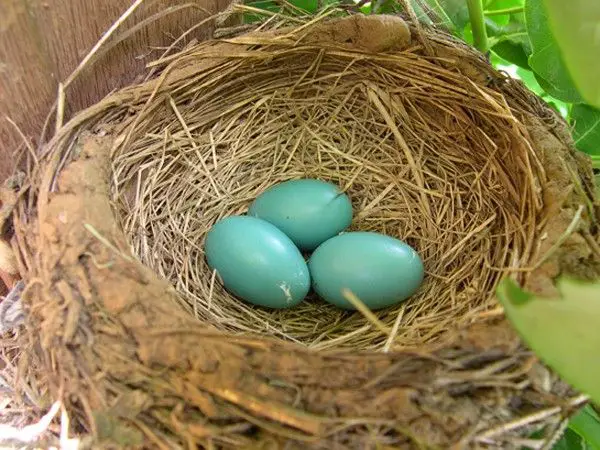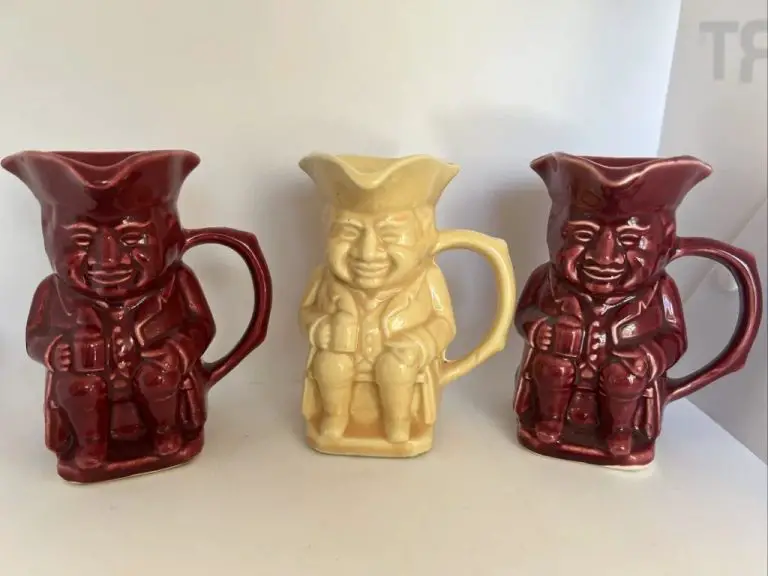Is Tiffany Blue And Robin Egg Blue The Same?
Tiffany Blue and Robin’s Egg Blue are two iconic shades of light blue that have distinct origins and cultural associations. Though similar at first glance, they have key differences that designers, brands, and anyone who loves color should understand.
Both colors emerged in the mid-19th century and went on to be trademarked and used extensively in products from the companies that made them famous. Tiffany Blue was developed by Tiffany & Co., the luxury jewelry retailer, while Robin’s Egg Blue first came into use as a descriptive color name referencing real robin’s eggs.
In this article, we’ll uncover the precise origins, trademark protections, RGB values, and unique cultural symbolism behind Tiffany Blue versus Robin’s Egg Blue. We’ll also highlight how brands leverage these shades today and suggest other light blues to consider for your projects.
What Is Tiffany Blue?
Tiffany Blue is a specific shade of light blue associated with luxury jewelry brand Tiffany & Co. The official Pantone number for Tiffany Blue is Pantone 1837, referring to the year Tiffany & Co. was founded (https://www.adobe.com/express/colors/tiffany-blue). Though Tiffany & Co. had been using a light blue color since the 1840s, they officially trademarked the specific custom color in 1998.
The robin egg blue color used in the Tiffany Blue boxes and bags has become iconic and synonymous with the Tiffany brand. Some fun facts about Tiffany Blue (https://theurbangent.com/whats-the-history-of-tiffany-blue-color/):
- It was inspired by the turquoise-blue hue of the Mediterranean Sea.
- Tiffany Blue boxes were initially not meant to be kept, but customers held onto them as status symbols.
- The color aims to evoke feelings of elegance, romance and luxury.
So in summary, Tiffany Blue refers to the specific pastel blue color associated with and trademarked by luxury jewelry company Tiffany & Co. since 1845.
What Is Robin Egg Blue?
Robin egg blue is a light blue-green color that does not have an official Pantone number. It is a common name used to describe the specific shade of blue often seen on robin eggs. The color is similar to a sky blue but has a hint of green that gives it a soft, soothing appearance.
The unique blue-green color found on many robin eggs results from pigments deposited onto the eggshell as it develops in the mother robin’s oviduct. The pigments help camouflage and protect the egg when the mother bird sits on the nest. While the exact shade can vary, robin egg blue typically refers to the distinctive pastel blue-green hue commonly observed.
Unlike defined colors like Tiffany Blue that have an official Pantone number, robin egg blue is simply a descriptive term. However, the color remains widely recognized due to its prevalence in nature and its frequent use in paints, dyes, and other color applications.
How the Colors Were Created
Tiffany blue was created in 1837 for the cover of Tiffany’s Blue Book catalog. According to the Tiffany & Co. website, “The iconic robin’s-egg blue hue known around the world today as Tiffany Blue® has been synonymous with the luxury house since the iconic Tiffany Blue Box® made its debut. It was pioneered by the company’s founder, Charles Lewis Tiffany, who chose the distinctive color for the cover of Tiffany’s Blue Book catalogue in 1837.”
Robin egg blue, on the other hand, was inspired by the light blue color of robin eggs found in nature. As explained on Wikipedia, “The color robin egg blue is displayed at right. This color was formulated by Crayola in 1993 as one of the colors in its special Magic Scent crayon collection.” (https://en.wikipedia.org/wiki/Tiffany_Blue)
Visual Comparisons
Though similar at first glance, there are subtle differences between Tiffany Blue and Robin’s Egg Blue that become apparent when viewed side-by-side. Here are some examples comparing the two colors:
This image shows swatches of the exact hex codes for Tiffany Blue (#81D8D0) and Robin’s Egg Blue (#92D1E4). You can see that Tiffany Blue is brighter and has more green undertones, while Robin’s Egg Blue is slightly more muted with a hint of grey.
Here a classic Tiffany & Co. box in their signature Tiffany Blue is placed next to a robin’s egg. The Tiffany Blue appears richer and more saturated.

This room features Robin’s Egg Blue on the wall and furnishings. The soft pale blue is quite different from the bold Tiffany Blue often seen on jewelry boxes and marketing materials.

Technical Color Analysis
Tiffany Blue and robin egg blue have slight differences when analyzed technically based on their Pantone numbers, RGB values, and HEX codes.
The specific Tiffany Blue color is Pantone 1837, with RGB values of R=119, G=217, B=211 and a HEX code of #77D9D3, according to iwork3. Robin egg blue is closest to Pantone 2227 C, with RGB values of R=89, G=190, B=178 and a HEX code of #59BEB2, as noted by Pinterest.
While the RGB and HEX values are similar, with both being shades of light blue-green, Tiffany Blue contains more green while robin egg blue leans slightly more blue. The Pantone numbers also reflect their unique identities as proprietary colors for the Tiffany & Co. brand and the common name reference to robin eggs, respectively.
Cultural Associations
Tiffany blue is strongly associated with luxury, elegance, and high-end jewelry because of its long-standing use by Tiffany & Co. The distinctive robin egg blue boxes and bags from Tiffany’s are globally recognized as symbols of exclusivity and prestige.
Robin egg blue, on the other hand, is more associated with spring, nature, fertility, and new beginnings. The pale blue color is reminiscent of robin eggs commonly seen during spring, giving it a fresh and uplifting feel. Robin egg blue evokes a softer, more pastoral mood compared to the refined glamor of Tiffany blue.
Sources:
https://en.wikipedia.org/wiki/Tiffany_Blue
Using the Colors in Design
The unique hues of Tiffany blue and robin’s egg blue evoke different moods and aesthetics in design. Tiffany blue often conveys luxury, exclusivity, and elegance due to its long association with the famous jewelry brand. It’s used to create a sophisticated and upscale look. This cool, saturated blue works well in fashion, the home decor, event design, and branding.
Robin’s egg blue has a softer, more playful feeling. It’s often described as sweet, cheerful, gentle, and calming. This pastel blue brings a lightness and whimsical quality to designs. It’s popular in children’s products, baby showers, Easter decorations, and youthful styles. The soothing pale blue can create a relaxing oasis inside the home.
Both colors add a refreshing touch to designs but Tiffany blue does so with bold brilliance while robin’s egg blue has a more subdued charm. Tiffany blue commands attention while robin’s egg blue blends into the background more easily as an accent hue. These versatile blues provide alternate aesthetics to experiment with in graphic design, web design, product design, and any creative visual medium.
Similar Colors
While Tiffany blue and robin egg blue have distinct shades and identities, there are a few other light blue colors that come close to one or the other.
Some alternatives that are similar but not identical to Tiffany blue include baby blue, sky blue, and aquamarine. These tend to be slightly lighter or greener in hue.
Colors that are comparable to robin egg blue but still distinct include teal, cyan, and turquoise. These shades tend to have a bit more green or gray in them compared to true robin egg blue.
So while other pale or pastel blues may evoke Tiffany blue or robin egg blue in look and feel, small variations in hue, brightness, and saturation mean no color is exactly the same as these iconic shades.
Conclusion
In summary, while Tiffany Blue and robin egg blue may appear similar at first glance, they have distinct origins, shades, and cultural associations.
Tiffany Blue is a specific Pantone color created by Tiffany & Co., while robin egg blue is a general color family inspired by robin eggs found in nature. The Tiffany Blue hue is brighter and more saturated than most robin egg blues.
Both colors evoke a sense of springtime and rebirth. However, Tiffany Blue is strongly associated with the luxury Tiffany brand, while robin egg blue has a more vintage, pastoral feeling. Robin egg blue is also connected to Easter traditions.
In design, Tiffany Blue is trademarked and closely controlled by Tiffany & Co. Robin egg blue is more flexible for general use across many contexts. While the two colors can complement each other, Tiffany Blue stands out more with its iconic, vibrant look.
With their shared light blue tones, Tiffany Blue and robin egg blue offer lovely springtime palette options. But the signature Tiffany Blue remains incomparable due to its proprietary status and brand identity.

